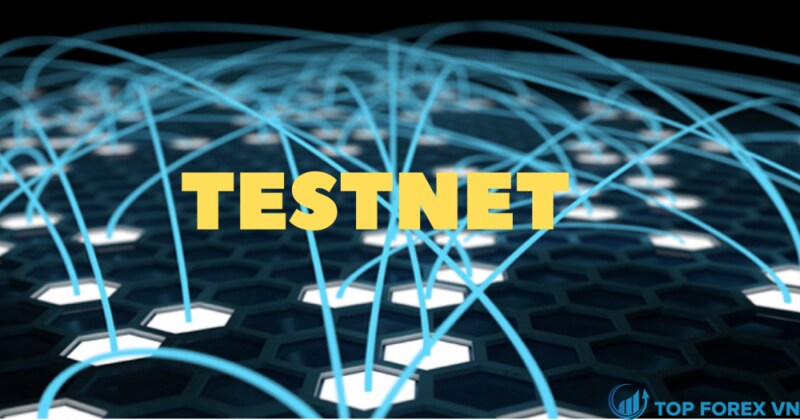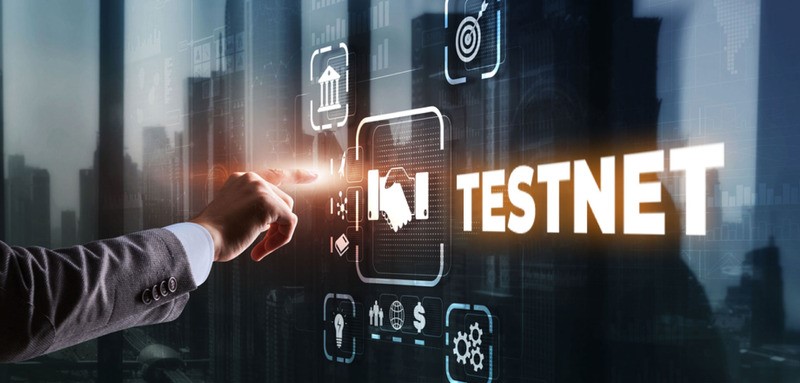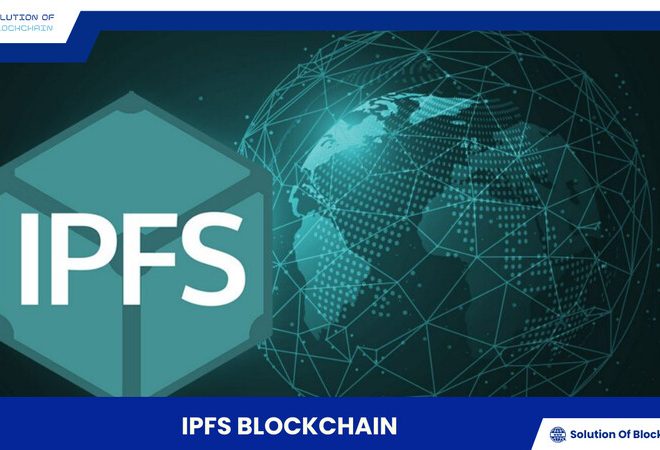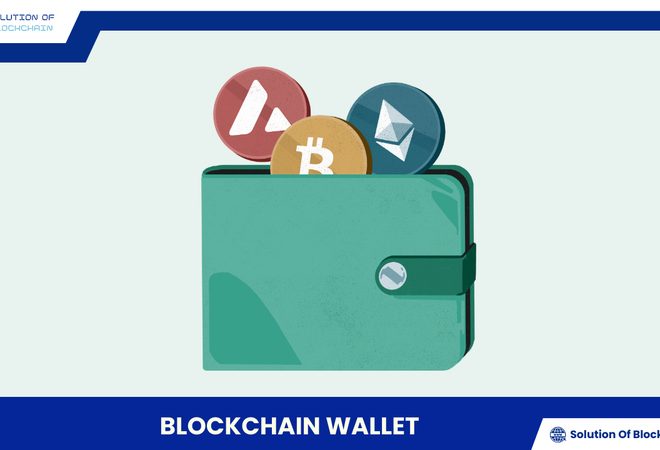
What is a Testnet? Overview of Blockchain test network
Testnets are an indispensable tool in the development and refinement of blockchain projects. So, what is a Testnet? Let’s explore its significance and how to engage with this test network to unlock the potential of blockchain technology.
Understanding Testnets
What is a Testnet?
A Testnet, also known as a test network, is a replicated version of the main blockchain (Mainnet) but operates independently and uses tokens with no real value. It are designed to create a safe environment where developers can test new features, identify and fix bugs before deployment on the Mainnet – the official blockchain network.
Purpose of a Testnet
- Testing new features: Testnets enable developers to check the feasibility, performance, and stability of new features in a real-world environment without affecting the Mainnet.
- Identifying and fixing bugs: During testing, potential errors, security vulnerabilities, or issues can be discovered and rectified before deployment on the Mainnet.
- Gathering user feedback: Testnets provide a platform to collect feedback from the community, helping to improve the product and user experience.
- Building trust: The use of Testnets demonstrates the project’s transparency and commitment to the community, fostering trust among potential investors and users.
Comparing Testnet and Mainnet
- Purpose: Testnets are primarily built for testing and development. It’s where developers can freely experiment with new features, identify and fix bugs without impacting the main network. On the other hand, the Mainnet is the official blockchain network where real transactions with valuable cryptocurrencies take place. The Mainnet focuses on providing a stable and secure environment for users to conduct transactions and use applications.
- Tokens: A key difference between Testnet and Mainnet lies in the value of tokens. On a Testnet, the tokens used have no real value; they serve only for testing purposes. Conversely, on the Mainnet, tokens have real value and can be traded on the market.
- Stability and security: Due to its experimental nature, a Testnet may encounter issues, errors, or even resets during development. This allows developers the freedom to experiment and adjust without causing severe consequences. Meanwhile, the Mainnet demands the highest level of stability and security to ensure the safety of users’ assets and data. Any issues or errors on the Mainnet can result in significant financial and reputational damage.
- Participants: Testnets primarily attract developers, miners, and users who want to test new features. They play a crucial role in providing feedback and helping improve the project before its official launch. The Mainnet, on the other hand, is open to all users, including those new to the cryptocurrency world.
How Testnets work
Testnet deployment
- Copying and setup: Initially, developers create a copy of the main blockchain, but it operates entirely independently with separate data. On this Testnet, they configure new parameters, activate experimental features, and distribute a quantity of test coins/tokens (without real value) to participants.
- Flexible testing environment: Testnets allow developers to freely adjust network parameters, experiment with different consensus mechanisms, or deploy protocol updates without affecting the Mainnet.
Testing on a Testnet
Developers
- Deploy Smart Contracts: Developers deploy new smart contracts on the Testnet to test their logic, performance, and interoperability.
- Test dApps: They also build and test decentralized applications (dApps) on the here, ensuring a smooth and error-free user experience.
- Monitor and vollect data: Monitoring tools are used to track Testnet activity, collecting data on network performance, transaction processing times, and other key metrics.
Miners
- Test hardware and software: Miners check the compatibility of their mining hardware and software with the Testnet, adjusting configurations to optimize mining performance.
- Practice mining: They participate in the mining process on the Testnet, competing to solve puzzles and add new blocks to the blockchain.
- Evaluate rewards: Miners can assess the attractiveness of block rewards and transaction fees on the Testnet, helping them decide whether to participate in mining on the Mainnet in the future.
Users
- Experience features: Users interact with the project’s new features, use dApps, and conduct transactions on the Testnet.
- Provide feedback: They report any bugs, issues, or negative experiences they encounter, assisting developers in improving the product.
- Contribute to the community: Users can participate in forums, chat groups, and the project’s social media channels to discuss, share knowledge, and provide feedback.
Identifying and fixing bugs
- Bug reporting: During testing, bugs and issues are reported to the development team by users and other participants.
- Analysis and resolution: The development team conducts a thorough analysis of bug reports, identifies the root cause, and implements patches or updates to address the problem.
- Retesting: After fixing bugs, updates are deployed on the Testnet, and the testing process is repeated to ensure that the bugs have been completely resolved and do not cause new problems.
Updates and improvements
- Feature enhancements: Based on user feedback and testing results, developers continue to improve and upgrade new features, optimizing performance and user experience.
- Protocol updates: Testnets can also be used to test blockchain protocol updates, ensuring compatibility and stability before deployment on the Mainnet.
- Scaling: Developers can test scaling solutions on the Testnet to ensure that the blockchain can handle a large number of transactions and users upon official launch.
Deployment on Mainnet
- Final evaluation: After the Testnet has undergone multiple rounds of testing and improvement, the development team conducts a final evaluation to ensure that everything is ready for deployment on the Mainnet.
- Deployment: Once all criteria are met, new features and updates are deployed on the Mainnet, officially launching to the public.
- Monitoring and maintenance: After deployment, the development team continues to monitor Mainnet activity, ready to address any issues or errors that may arise.
The importance of Testnets
For developers
- Risk mitigation: Testnets allow developers to test and identify bugs in a safe environment, minimizing risks when deploying on the Mainnet.
- Performance optimization: Testnets help assess the performance of new features and optimize them before the official launch.
- User feedback collection: Through Testnets, developers can gather feedback from the community to improve the product and user experience.
For miners
- Skill development: Testnets provide an environment for miners to practice and hone their mining skills.
- Strategy testing: Miners can test different mining strategies on the Testnet before applying them on the Mainnet.
- Mainnet preparation: Testnets help miners familiarize themselves with the blockchain protocol and prepare for mining on the Mainnet.
For users
- Safe experience: Users can experience the project’s new features without worrying about losing real money.
- Project understanding and evaluation: Testnets offer an opportunity for users to learn about the project, assess its potential, and decide whether to invest.
- Project contribution: Users can contribute to the project’s development by reporting bugs or providing feedback.
Guide to participating in Testnets
Research and choose a project
- Thoroughly understand the project: Read the whitepaper, learn about the technology, development team, and project roadmap.
- Check Testnet information: Visit the project’s website or official communication channels for information about the Testnet.
- Choose a suitable project: Based on your interests and knowledge, select a Testnet project that you find intriguing.
Prepare a Cryptocurrency Wallet
- Create a new wallet or use an existing one: If you don’t have a wallet, create a new one on a reputable platform. If you already have a wallet, ensure it’s compatible with the Testnet project’s blockchain.
- Back up your wallet: Securely back up your wallet’s seed phrase.
Get test Coins/Tokens
- Access a faucet: A faucet is a tool that provides a small amount of test coins/tokens for free. Search for the project’s faucet on websites or through the project’s community.
- Follow the instructions: Each faucet may have different requirements. Follow the instructions to receive coins/tokens.
Connect your wallet to the Testnet
- Add the Testnet network to your wallet: Search for and add the project’s Testnet network to your wallet.
- Transfer Coins/Tokens to your wallet: After receiving coins/tokens from the faucet, transfer them to your Testnet wallet.
Experience and explore
- Conduct transactions: Send and receive coins/tokens, test the project’s features.
- Interact with the community: Join the project’s chat groups and forums to exchange ideas and learn.
- Search for and report bugs: If you discover bugs or encounter issues during use, report them to the development team.
Important notes
- Always be wary of scams: Never share your seed phrase or personal information with anyone.
- Do not invest real money in Testnets: Coins/tokens on Testnets have no real value.
- Be patient and learn: Testnets are a testing environment and may experience issues or errors. Be patient and use it as an opportunity to learn and experience.
Prominent Testnet projects today
- Ethereum 2.0: A major upgrade to Ethereum, transitioning from a Proof of Work to a Proof of Stake consensus mechanism. The Ethereum 2.0 Testnet is already operational and attracting participation from many users, bringing higher performance and scalability to the network.
- Polkadot: Polkadot is a multi-chain network that allows different blockchains to connect and interact with each other. Polkadot’s Testnet, Kusama, is already active and supports the development of parachains – independent blockchains connected to Polkadot.
- Aptos: Aptos is a new Layer 1 blockchain using the Move programming language, focusing on providing a better user experience and high scalability. The Aptos Testnet is operational and has attracted the interest of many developers and users due to its fast transaction processing speed and low fees.
- Sui: Sui is also a Layer 1 blockchain utilizing the Move language, focusing on building highly scalable and user-friendly decentralized applications. The Sui Testnet is active and provides a platform for testing new applications and exploring the potential of blockchain technology.
- Other projects: Additionally, there are many other notable Testnet projects such as Solana, Avalanche, Cosmos, Near Protocol, etc. Each project has its unique features and advantages, attracting the attention of the blockchain community.
This article has explained in detail what a Testnet is. Testnets play an indispensable role in promoting development and innovation in the blockchain and cryptocurrency world. They not only help developers create better products but also build trust and transparency within the community.
If you are interested in the field of blockchain and cryptocurrency, explore and participate in Testnet projects to experience and contribute to the development of this technology. Remember to always be cautious, do your research before investing, and only invest what you can afford to lose.
If you have any further questions related to this article or the field of cryptocurrency, feel free to leave a comment below, and Solution Of Blockchain will be happy to assist you!






